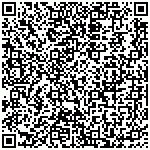QR codes to me are roughly equal parts admirable and irritating. 
Admirable, because they are an elegant way to encode a lot of information in a small visual space. Irritating, because they are showing up all over the place, not always for a good reason.
I don’t hate QR codes. (A lot of people hate them. I can’t work up the energy for that.) Sometimes I even think they are cute (like this Heifer International example). I just wish they would settle down into a sensible standard that people know how to apply. Right now they’re being thrown around all haphazardly, and it makes me crabby.
Here’s my breakdown. There are a lot of other people who have made similar lists, like Terence Eden’s (his is more technical); I’m not claiming to have some kind of last-word genius revelation here.
QR Code Uses that Make Sense to Me
Use a QR code to make someone who is currently not on the Internet want to get on the Internet with their smartphone and look at your stuff as soon as possible. This is most useful when the thing you want them to look at has an expiration date—like a contest, or a concert, or a conference.[1] It works best with:
- Public locations: Banners on buildings. Posters on coffee shop bulletin boards. Signs on the sides of buses (the kind that stop). Out-on-the-street codes are good when you don’t know who your audience is, or if everyone is your audience, and you want to cast a wide net.
- Little everyday objects that someone is going to throw away soon. Paper coffee cups. Packs of gum (5 is doing this, according to my last pack of React2). Pizza boxes.
- Things that stay still. Taking a picture of QR code while either you are or it is moving doesn’t work too well, at least until Adobe comes out with its gobsmacking “de-blur” feature (the “Ooooh!” moment comes at 2:32.).
QR Code Uses I Find Baffling
- Some people use QR codes on websites. I do not understand this. I admit and agree that the codes can be quite beautiful, and make nice graphic elements. But unless you make the QR code into a clickable hyperlinked image, what do you expect to happen? People sitting at a computer with a screen and taking a picture of their screen with their smartphone? I don’t see it. **Update!** A few days after I wrote this, a strong case was made to me for when a QR code on a website might actually be more useful than a text or image link: If you want someone to download something onto their smartphone, like an app. For example, the project I work for just finished a mobile app, now available on the Android Market. If I put a QR code here marked “Android Users! Scan this code!”, that would actually save them a step. Seems like a pretty rare use case right now, but it could start to happen more often.
- In email. Same terms apply as for websites; why not just use a hyperlink[2]? But somehow the flavor of irritation from an emailed QR code is different. It makes me feel like … I don’t know … you wrote me a note with a pen, but rather than show it to me you’ve scanned it and flipped the image. I can un-flip the image; it’s not hard. But why are you making me do that?
- On a printed piece (like a business card) that also prominently features, in text, the same URL as is encoded by the QR code. (For example, there’s pretty text that says “myURL.com”, and then a QR code that when decoded goes to http://www.myURL.com.) This doesn’t make sense. The thing you are encoding—most usually a link—should not be something your audience could easily remember perfectly a few minutes or days later. I’m fine with a QR code for that YouTube video about the kid racing the otter, or an Etsy listing for something I love (by someone I love); I’m not going to memorize links that long and non-semantic while walking past them. But if it’s just “MyWebsite.com”, I’m pretty sure I can remember that. Also, if you’re linking to your top-level domain, you’re probably not tracking how many people are getting to your site from a QR code, which is a sad wasted opportunity for good evaluation data collection.
- On subway trains, where (a) I can’t get on the Internet because there’s no signal, and (b) I don’t want to be waving my smartphone around, especially near the doors (that’s a good way to get it stolen, at least on the DC Metro. Admittedly, DC Metro has some above-ground portions where you’ll have signal, but those are also usually the most jolty/wobbly parts of the track, so good luck with that capture.
- Things that move. Not to belabor this point (too late?), but capturing a QR code with your phone works best when neither you nor the code is moving at speed. Bus stopped at red light while you’re standing on corner? Fine. Bus on the highway? Not so much. At least, not unless it’s the kids in the back seat you want to target with your marketing campaign.
And an Award for Special Bafflement goes to a QR code I saw on a poster a couple of months ago. I get a demerit for not taking a picture of it. The graphic designer had taken the (presumably working) code, and then graphically bent and twisted it at the edges to fit it into another shape. This also made the code unscannable.
[1] Whether or not it starts with “con” is optional. It doesn’t even have to start with C.
[2] Does the fact that I wrote “hyperlink” here instead of “link” qualify me for a Fogey Badge?[3]
[3] I think I need to start a Fogey Badge list to supplement my Geek Badge list.